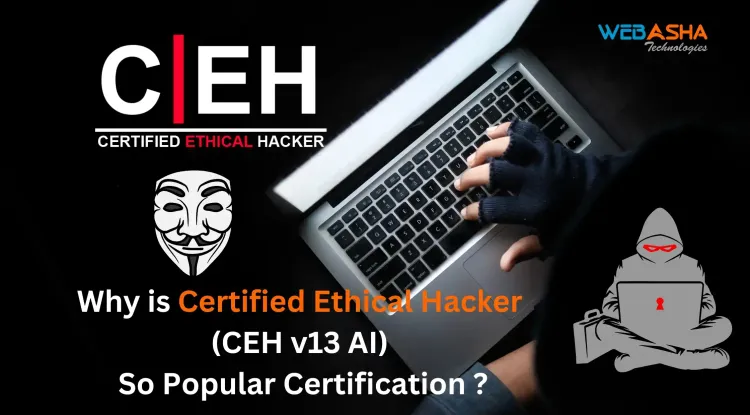What Is BlackEye Phishing and How Does It Work? The Complete Guide
BlackEye phishing is a dangerous form of cyberattack that targets online services by creating fake websites to steal sensitive information. Attackers exploit the similarities between legitimate and fake websites to deceive users. This blog explores how BlackEye phishing works, its effectiveness, and how to protect yourself from falling victim to these attacks. By staying vigilant and following best security practices, you can safeguard your online identity from these deceptive techniques.

Introduction
In today's digital world, phishing attacks have become one of the most common forms of cyberattacks, and hackers continuously innovate new techniques to deceive unsuspecting victims. One such phishing technique is BlackEye Phishing, which has gained attention for its effectiveness and stealth. This type of phishing attack targets individuals via deceptive fake websites that impersonate popular online services, often collecting sensitive user data such as login credentials, credit card numbers, and more.
In this blog, we will explore what BlackEye Phishing is, how it works, and the risks it poses to both individuals and organizations. Additionally, we will provide tips on how to avoid falling victim to such attacks and the methods used to detect and defend against them.
What is BlackEye Phishing?
BlackEye Phishing is a phishing technique that primarily targets social media and messaging platforms, where users are most likely to fall for scams. It is a variant of credential stuffing attacks, which involve deceiving users into providing their usernames, passwords, or other sensitive information by creating counterfeit versions of popular websites. The BlackEye phishing method is commonly associated with impersonating websites like Facebook, Instagram, YouTube, and even online banking platforms.
The attack is typically carried out using tools that automatically generate phishing pages for various services. Once victims click on a phishing link, they are redirected to a fake website designed to look like the legitimate login page. These phishing pages often look nearly identical to the real websites, which makes it challenging for victims to spot the difference. When the victim enters their credentials, the hacker captures the data and uses it for malicious purposes, including identity theft and unauthorized access to sensitive accounts.
How Does BlackEye Phishing Work?
-
Phishing Page Creation: Attackers use specialized tools to create fake login pages that look almost identical to the legitimate service they are impersonating. The pages are typically designed to target specific platforms, including social media, banking services, and email platforms.
-
Phishing Link Distribution: The attackers distribute phishing links via social media posts, emails, or SMS. These links may look convincing, such as a message that appears to be from a trusted source like a friend or a bank.
-
Victim Clicks on the Link: Once a victim clicks on the malicious link, they are redirected to the counterfeit login page created by the attacker. The page will prompt the victim to input their login credentials or other sensitive information.
-
Credential Harvesting: After the victim enters their details, the attacker harvests this information and uses it to either gain unauthorized access to the victim’s account or carry out further fraudulent activities.
-
Exploitation: The stolen credentials can be sold on the dark web, used for account takeover, or exploited to perform other malicious actions.
Why is BlackEye Phishing Effective?
BlackEye phishing is highly effective because of several factors:
-
Realistic Fake Websites: The fake websites are designed to look identical to the legitimate sites they are mimicking, making it difficult for victims to detect them as fraudulent.
-
Social Engineering: Attackers use social engineering techniques, such as impersonating trusted individuals or creating a sense of urgency, to trick victims into clicking on phishing links.
-
Wide Targeting: BlackEye phishing campaigns often target a broad range of services and platforms, increasing the chances of luring in victims who use these platforms.
-
Anonymity: Phishing attacks like BlackEye are often carried out anonymously, making it difficult for authorities to trace the perpetrators.
How to Protect Yourself from BlackEye Phishing
-
Check URLs: Always check the URL of the website you are visiting to ensure it’s authentic. Look for "https://" at the beginning of the URL and check for spelling errors in the domain name.
-
Use Multi-Factor Authentication: Enabling multi-factor authentication (MFA) adds an extra layer of security, making it harder for attackers to gain unauthorized access.
-
Avoid Clicking Suspicious Links: Be cautious when clicking on links in unsolicited emails, messages, or social media posts. Always verify the source before clicking.
-
Update Your Software: Keep your software, browsers, and security tools up to date to protect against vulnerabilities that can be exploited by phishing attacks.
-
Use Anti-Phishing Tools: Consider using anti-phishing browser extensions or software that can help detect malicious websites and warn you before you visit them.
Detecting BlackEye Phishing Attacks
Detecting BlackEye phishing attacks can be challenging, but there are signs you can look for:
-
Suspicious URLs: If the URL seems strange or slightly altered from the original website, it’s a strong indication that the site may be a phishing attempt.
-
Inconsistencies in Website Design: Look for subtle differences in logos, text, and design. Phishing sites often use slightly altered logos or low-quality graphics.
-
Pop-up Requests for Sensitive Information: Be cautious if you are prompted for personal or financial information unexpectedly.
-
Urgent Messages or Threats: Phishing sites often create a sense of urgency, like claiming your account will be locked unless you log in immediately.
Conclusion
BlackEye phishing is a sophisticated and highly effective form of cyberattack that can lead to identity theft, account takeover, and other serious consequences. Understanding how BlackEye phishing works and implementing the necessary precautions, such as checking URLs, using multi-factor authentication, and avoiding suspicious links, can help protect you from falling victim to these attacks.
As cyber threats continue to evolve, staying informed about phishing techniques and enhancing your security practices will ensure that you remain protected online.
FAQ
-
What is BlackEye Phishing?
BlackEye phishing is a form of cyberattack where hackers create fake login pages of legitimate websites to steal user credentials and sensitive information. -
How does BlackEye Phishing work?
Attackers distribute phishing links to fake websites that mimic real login pages. When victims enter their credentials, the attackers collect and exploit this data. -
What types of websites are most commonly targeted by BlackEye phishing?
BlackEye phishing primarily targets social media platforms (e.g., Facebook, Instagram), email services, and online banking websites. -
What makes BlackEye phishing so effective?
Its effectiveness comes from creating nearly identical copies of real websites, making it difficult for victims to distinguish the fake from the legitimate. -
How can I recognize a BlackEye phishing attempt?
Look for suspicious URLs, unusual website design, and unexpected pop-ups or requests for login information. -
Is BlackEye phishing different from traditional phishing?
Yes, BlackEye phishing specifically uses fake websites designed to steal login credentials for popular platforms, unlike traditional phishing that might use emails or attachments. -
What should I do if I enter my credentials into a BlackEye phishing site?
Immediately change your passwords, enable multi-factor authentication, and report the incident to the affected service provider. -
Can BlackEye phishing lead to identity theft?
Yes, stolen credentials can be used for identity theft, financial fraud, or unauthorized access to personal accounts. -
How can I protect myself from BlackEye phishing attacks?
Check URLs carefully, avoid clicking on suspicious links, enable multi-factor authentication, and stay cautious about unsolicited messages. -
Are there tools to detect phishing websites?
Yes, anti-phishing tools and browser extensions, such as those from Google and Norton, can help detect and warn about malicious websites. -
Is BlackEye phishing illegal?
Yes, BlackEye phishing is illegal as it involves impersonating legitimate websites and stealing sensitive information. -
What do attackers do with the stolen credentials from BlackEye phishing?
The stolen credentials are often sold on the dark web, used for unauthorized access, or exploited for financial gain. -
Can BlackEye phishing be used for social engineering?
Yes, attackers often use social engineering techniques by impersonating trusted entities like friends or well-known brands to lure victims into clicking phishing links. -
How can I differentiate a legitimate website from a phishing website?
Look for small inconsistencies in the domain name, check for an "HTTPS://" in the URL, and verify that the website’s design matches the original. -
Can BlackEye phishing be prevented?
While it can be hard to prevent entirely, raising awareness, using phishing filters, and adopting security best practices like multi-factor authentication can reduce risks. -
What is credential harvesting?
Credential harvesting is the practice of collecting sensitive login credentials through phishing websites or fake login forms. -
What should I do if I receive an email containing a BlackEye phishing link?
Do not click the link. Instead, report it to your email provider and delete it. -
Can BlackEye phishing be used to steal credit card information?
Yes, if the attacker designs a fake website that mimics a payment page, they can steal credit card details entered by the victim. -
How can I identify a suspicious URL?
Check for unusual spellings, extra characters, or unfamiliar domain names. Official websites often use familiar domain names like ".com" or ".org." -
What are the most common phishing websites targeted by BlackEye phishing?
Facebook, Instagram, Google, YouTube, and online banking services are the most common targets for BlackEye phishing attacks. -
How does social engineering work in BlackEye phishing attacks?
Hackers use social engineering tactics by creating a sense of urgency, such as threatening to lock an account or claiming it needs immediate verification. -
Can I report a BlackEye phishing website?
Yes, you can report a BlackEye phishing website to the legitimate service provider (e.g., Facebook, Google) or use phishing reporting tools like PhishTank. -
What is the role of DNS in BlackEye phishing?
Attackers may modify DNS records to redirect users to fake phishing websites without their knowledge. -
How can I tell if a website is insecure?
Check for "HTTP://" instead of "HTTPS://" in the URL and look for a padlock icon, which indicates a secure connection. -
Are there any anti-phishing programs I can use to protect myself?
Yes, many programs, like Norton AntiVirus and McAfee, offer anti-phishing protection. Browsers like Chrome also provide built-in phishing protection. -
Why do phishing attackers use fake login forms?
Fake login forms are used to capture usernames, passwords, and other credentials from unsuspecting users by mimicking legitimate websites. -
Can BlackEye phishing be used to spread malware?
Yes, phishing websites may include malware or links to malicious files that, when downloaded, can infect your system. -
How does multi-factor authentication (MFA) help against BlackEye phishing?
MFA adds an additional layer of security, so even if an attacker obtains your credentials, they won’t be able to access your accounts without the second factor. -
What is the first sign that I’ve fallen victim to BlackEye phishing?
A sudden change in your account behavior, such as receiving security alerts or unauthorized access to your accounts, is a sign you may have fallen victim. -
What steps can organizations take to prevent BlackEye phishing?
Organizations can implement employee training, anti-phishing tools, use of MFA, and conduct simulated phishing exercises to increase awareness.












![Top 10 Ethical Hackers in the World [2025]](https://www.webasha.com/blog/uploads/images/202408/image_100x75_66c2f983c207b.webp)

![[2025] Top 100+ VAPT Interview Questions and Answers](https://www.webasha.com/blog/uploads/images/image_100x75_6512b1e4b64f7.jpg)









